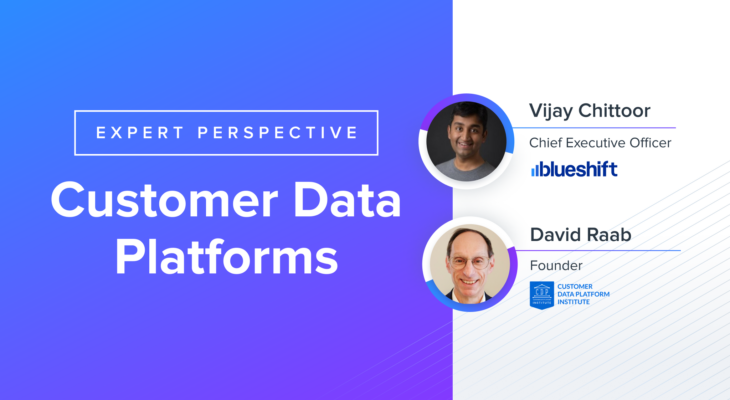Customer data plays a pivotal role, yet it often remains inaccessible to marketers. When harnessed by savvy marketers, this goldmine of data becomes the driving force behind personalized, engaging customer experiences. Customer Data Platforms (CDPs) are designed to tackle this challenge head-on by seamlessly unifying and making customer data accessible for marketers. However, the complex and rapidly changing CDP market causes confusion in selecting and effectively managing a CDP.
In a recent Expert Perspective webinar series (part 1 and part 2 now available on-demand), David Raab, Founder of the CDP Institute, and Vijay Chittoor, Co-Founder and CEO of Blueshift, help reduce confusion and provide insights for establishing a powerful, impactful CDP strategy. The series covers foundational topics ranging from understanding what a CDP is and its essential use cases to exploring the role of AI, achieving ROI, and crucial considerations for selecting the right CDP. This blog post will delve into 7 key takeaways from the insightful discussions:



